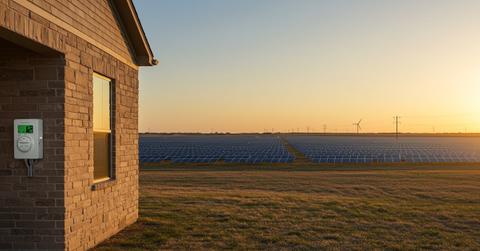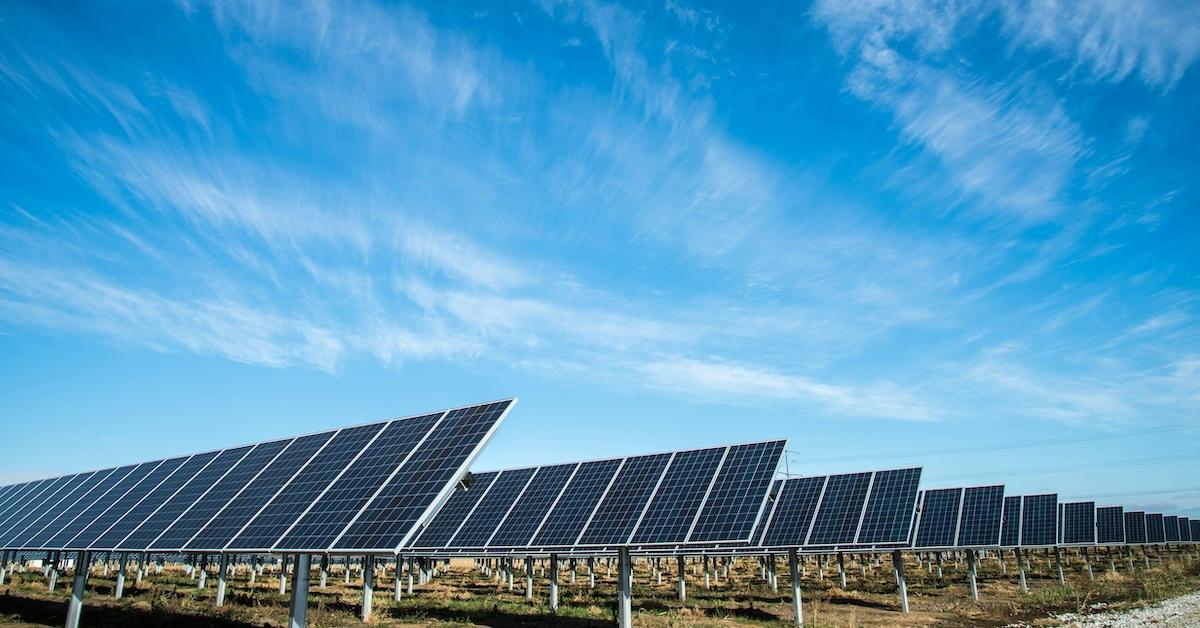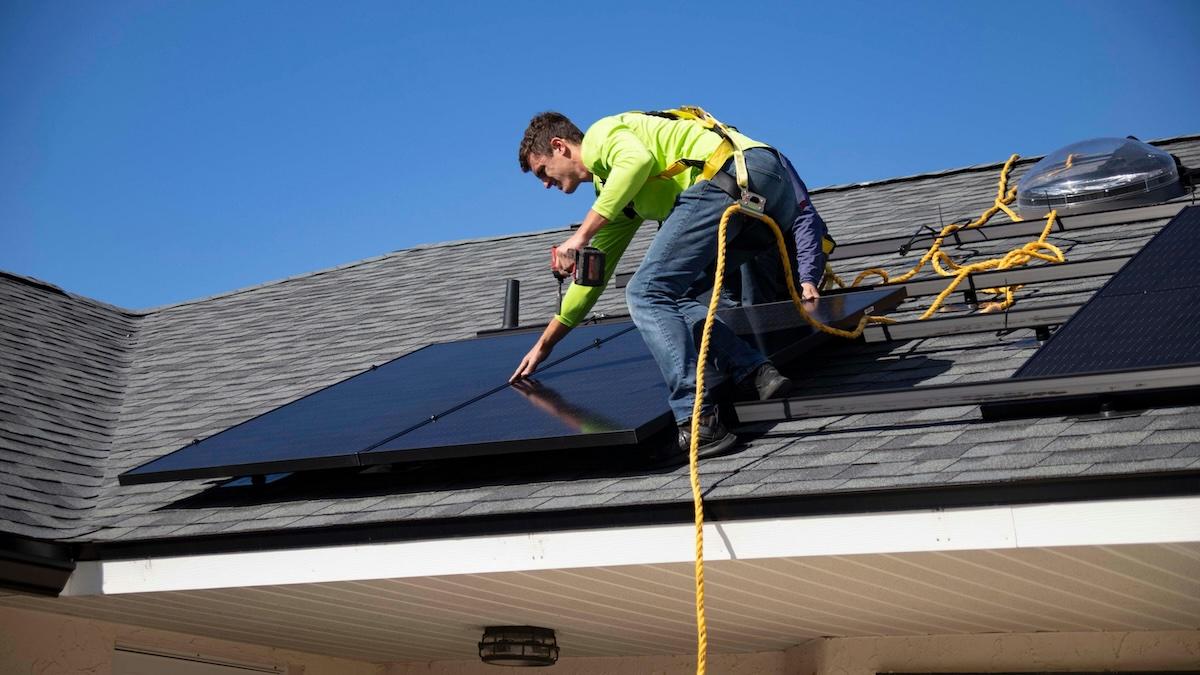Texas Just Shattered Solar Power Records, So Will My Electricity Bill Go Down?
The state now leads the nation in planned solar capacity.
Published Aug. 3 2025, 10:33 a.m. ET

If you live in Texas, you've probably heard the news: the Lone Star State is experiencing a massive surge in sunshine-powered electricity. The state is not just setting but shattering solar power records, rapidly becoming a national leader in clean energy generation. This boom is doing more than just helping the environment; it is also significantly improving the reliability of the state's power grid.
This incredible surge in cheap, clean energy raises a critical question for every Texan paying a utility bill. With all this new solar power flooding the grid, will my monthly electricity bill actually go down? It's a straightforward question with a surprisingly complex answer.
This analysis explores what these new records mean for the Texas energy market, how wholesale electricity prices are affected, and—most importantly—what determines whether those savings ever reach consumer wallets.

How Big Is Texas's Solar Boom?
The growth of solar power in Texas isn't just a small uptick; it's a massive transformation of the state's entire energy landscape. Solar is now the third-largest power source on the ERCOT grid, trailing only natural gas and wind. In fact, for the first half of the year, solar and wind combined to generate an astounding 40.2% of all electricity in the ERCOT region, a clear signal of a shift in energy production.
This renewable energy growth has also had a dramatic effect on grid stability. According to recent forecasts, the predicted chance of rolling blackouts during peak summer demand has dropped from a worrying 12% to just 0.30%, a direct result of the new generation capacity. Furthermore, this boom has helped keep Texas electricity prices about 24% below the national average, pushing back against claims that renewables make power more expensive.
Key Milestones in the Lone Star State
To understand the sheer scale of this change, let's look at some of the most impressive achievements from the recent solar surge:
- Solar generation in the first half of the year reached 31 million megawatt-hours (MWh), which is more than double the amount generated during the same period just two years ago.
- For the first time in history, solar generation topped coal-fired generation in three separate months of 2024 (March, April, and May).
- Texas has added over 9,600 MW of new generating capacity since last summer, with the vast majority coming from solar panels and battery storage systems.
- The state now leads the nation in planned solar capacity and is second only to California in total current solar output, solidifying its position as a clean energy powerhouse.
How Cheap Solar Can Lower Prices (But Doesn't Always)
You must understand the basics of the Electric Reliability Council of Texas (ERCOT) market to see how this solar boom could affect your bill. Think of it as a giant, real-time auction where power generators sell electricity to the retail companies that, in turn, sell it to you. When the sun is shining brightly, a massive supply of solar energy floods this market.

Because solar power has zero fuel costs, it is incredibly cheap to produce. This influx of affordable energy often drives the wholesale price of electricity way down, sometimes even to zero or negative prices during peak sunny afternoons. This is why the solar boom should lead to lower bills for everyone. However, that is only half the story, as the price benefits in the wholesale market don't automatically flow to every consumer.
The Wholesale Market: A Balancing Act
The massive amount of solar energy hitting the grid has positive and negative effects on the market. While it drives down daytime costs, it creates new challenges that can impact prices when the sun isn't shining.
| The Upside of the Solar Boom | The Downside and The Catch | ||
|---|---|---|---|
| Lower Midday Prices: Massive solar generation during the day drastically reduces wholesale electricity costs. | Not Automatic Savings: Most consumers are on fixed-rate or indexed plans and don't see these hourly price drops directly. | ||
| Reduced Grid Strain: Solar power meets peak afternoon demand when air conditioners are running full blast, reducing strain on the grid. | The "Duck Curve": When the sun sets, solar output drops to zero, and the grid must rely on other, often more expensive, sources, causing evening price spikes. | ||
| Increased Grid Reliability: Paired with battery storage, renewables have made the Texas grid more resilient and less prone to emergencies. | Policy Uncertainty: The recent repeal of federal tax incentives could slow future clean energy development, potentially raising household long-term costs by up to $220/year by 2040. |
Why Your Electricity Provider Is the Key to Lower Bills
Your retail electricity provider (REP) links the fluctuating wholesale market to your monthly bill. While the wholesale cost of power changes constantly, your final bill is determined by the specific plan you sign up for with your REP.
Many traditional electricity plans are designed to shield you from price spikes and prevent you from benefiting from price drops. To truly take advantage of the renewable energy boom, consumers need to choose a provider whose business model is built to work with, not against, clean energy.
Finding a Plan That Works With the Sun
The plan you choose matters more than ever when you want to lower your bill. The key is finding a provider that supports the renewable transition and helps you benefit from it. This is where a company like Rhythm Energy comes in. As a provider offering 100% renewable energy plans, Rhythm is designed to thrive in this new solar-powered world. By focusing exclusively on clean energy sources like Texas wind and solar, they can structure their plans to better align with the modern grid.
Choosing a provider like Rhythm means directly supporting renewables' growth, making the grid more reliable and affordable. While some providers might use complex plans with hidden fees, Rhythm focuses on transparent, competitive, and straightforward Texas electricity rates. This approach ensures you're contributing to a cleaner Texas and partnering with a company that helps you reap the financial rewards of the state's clean energy leadership.
So, What's the Bottom Line for Your Wallet?
Texas's record-breaking solar boom is genuinely driving down the cost of power on the wholesale market and making our grid more stable. These are real, measurable benefits for the entire state. However, these benefits are not automatic for your bank account.
As a consumer, you can turn this large-scale energy revolution into personal savings. The most important step is carefully reviewing your current electricity plan and choosing a retail provider that supports a renewable future.
By being an informed customer and selecting a plan from a forward-thinking provider, you can ensure that when Texas shines, your wallet sees the benefits, too. We recommend consulting your current plan's details and exploring options from providers committed to making renewable energy work for you.